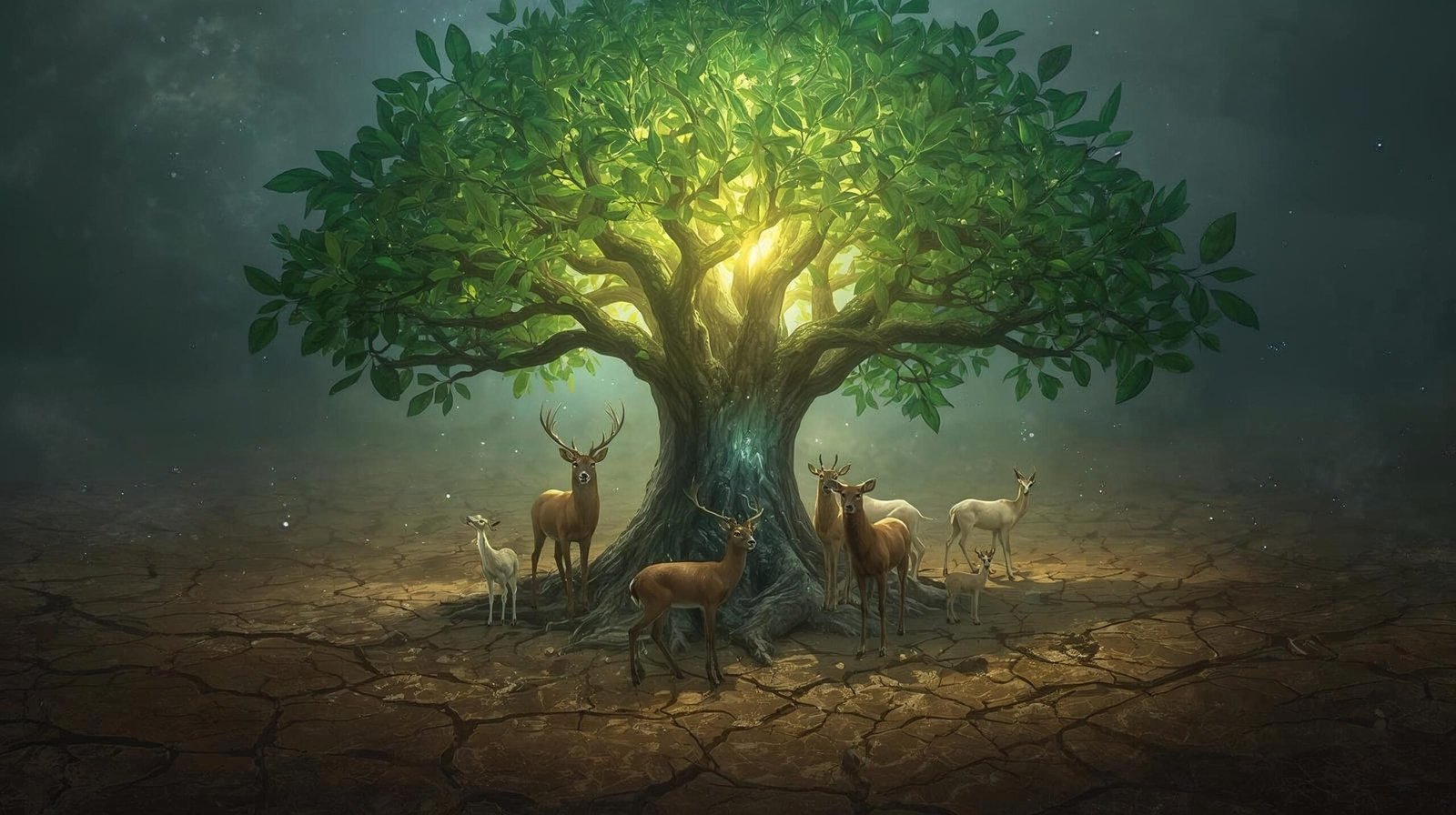The Sixth Extinction Summary: 7 Shocking Lessons from Kolbert’s Vision
Introduction
the sixth extinction summary represents the chilling core of Elizabeth Kolbert’s Pulitzer Prize–winning book The Sixth Extinction: An Unnatural History. Kolbert’s thesis is stark yet urgent: the Earth is undergoing a new mass extinction, and this time, humanity is the driving force. This detailed article offers a full, orthodox-English account of her argument, her evidence, and the lessons she imparts.
Through meticulous research and on-the-ground reporting, Kolbert illustrates how human activity has transformed the biosphere. From disappearing amphibians to dying coral reefs, her the sixth extinction summary unfolds like a warning bell echoing across centuries. Let us now explore her insights and their moral weight.

Part I: Understanding the Concept of the Sixth Extinction
1. The Idea of Mass Extinction
Across geological history, Earth has witnessed five great mass extinctions — periods when vast numbers of species vanished within short spans of time. These include the end-Ordovician, Late Devonian, end-Permian (known as “The Great Dying”), end-Triassic, and end-Cretaceous (which eliminated the dinosaurs).
Kolbert argues that we are now experiencing a sixth mass extinction, caused not by asteroids or volcanoes but by human activity. The the sixth extinction summary she presents highlights that this event is unprecedented: it is the first to arise from the conscious actions of one species.
2. The Anthropocene Epoch
Kolbert frames this extinction within what scientists now call the Anthropocene epoch — an age when human beings have become the dominant force shaping the planet’s climate and ecology. Deforestation, pollution, overfishing, carbon emissions, and invasive species have combined to alter every ecosystem.
In her the sixth extinction summary, Kolbert emphasizes that the speed of environmental change today is greater than any species’ ability to adapt or migrate. Evolution cannot keep pace with industrialization.
Part II: Case Studies That Reveal the Crisis
Kolbert’s research is rich in real-world stories. Each chapter of her book examines one example that reveals the complex causes of modern extinction.
3. Amphibians and the Deadly Fungus in Panama
In Panama, Kolbert witnesses the disappearance of the golden frog, decimated by a fungus named Batrachochytrium dendrobatidis. This microscopic killer has spread worldwide through global trade and travel. It thrives in habitats altered by humans, wiping out amphibian populations in mere years.
This opening story in the the sixth extinction summary illustrates how the interconnectedness of our world spreads disease faster than nature can respond.
4. The Mastodon and the Great Auk
Kolbert examines two historical extinctions — the American mastodon and the great auk — to show that human influence on species loss is not new. Long before industrial times, overhunting and habitat disruption had already begun shaping extinction patterns.
In the the sixth extinction summary, these examples remind us that extinction is not an ancient relic; it continues as a modern habit.
5. Lessons from the Dinosaurs
Kolbert revisits the Cretaceous–Paleogene extinction, which eradicated the dinosaurs, to demonstrate that survival in times of catastrophe depends on adaptability. When change is too sudden, even dominant species perish.
In the the sixth extinction summary, this story serves as an allegory: today’s humans may face a similar test of resilience if we fail to adapt to our own environmental impact.

6. The Oceans in Peril
Kolbert’s visit to coral reefs reveals the invisible crisis of ocean acidification. As oceans absorb more carbon dioxide, they become acidic, threatening corals, mollusks, and plankton — organisms that form the foundation of marine ecosystems.
Through this narrative, the the sixth extinction summary shows how marine collapse could trigger cascading effects across the food chain and human livelihood.
7. Forest Fragmentation and Vanishing Habitats
In the tropical rainforests of the Amazon and Central America, Kolbert observes how deforestation and habitat fragmentation drive countless species toward extinction. As trees fall for agriculture and logging, animals lose corridors to migrate and breed.
The the sixth extinction summary reveals that climate change compounds this crisis: as species move uphill to escape heat, they eventually run out of habitable space.
8. The Fate of the Neanderthals
Kolbert extends her exploration beyond animals, delving into human prehistory. The extinction of the Neanderthals, she argues, holds lessons for us. Humans outcompeted or assimilated them, proving both our adaptability and our destructiveness.
Thus, the the sixth extinction summary highlights a paradox — the very traits that ensured our survival are now threatening life itself.
9. The New Age of Conservation
Kolbert ends her book by visiting scientists attempting to halt the tide of extinction through captive breeding, seed vaults, and genetic preservation. While she admires these efforts, she remains skeptical about their sufficiency.
In the the sixth extinction summary, Kolbert reminds readers that conservation must go beyond technology; it requires ethical responsibility and global cooperation.
Part III: Seven Shocking Lessons from Kolbert’s Vision
Kolbert’s insights can be condensed into seven vital lessons that define the heart of the the sixth extinction summary.
-
Extinction is no longer natural. Human actions have replaced asteroids as the primary driver of species loss.
-
The pace of change exceeds adaptation. Climate change and pollution evolve faster than natural selection.
-
Crises interact. Deforestation, ocean acidification, and disease magnify one another’s effects.
-
Invasive species reshape ecosystems. Globalization mixes species that were never meant to coexist.
-
Oceans are warning systems. The first collapse will happen underwater — largely invisible to human eyes.
-
We must face difficult ethical choices. Conservation resources are limited; prioritization is essential.
-
Hope survives through human agency. The same creativity that caused the problem can also craft the solution.
These seven revelations make the the sixth extinction summary both alarming and empowering — a call to awareness, not despair.

Part IV: Debates and Critical Perspectives
While Kolbert’s argument has earned global acclaim, not all scientists agree on terminology. Some contend that a true mass extinction requires the loss of at least 75 percent of all species, a threshold not yet reached. Others argue that the current crisis may still be reversible if humanity acts swiftly.
Critics also warn that framing the narrative too grimly may discourage public engagement. Yet, the the sixth extinction summary retains value precisely because of its urgency — it awakens a sense of shared responsibility.
Part V: Actions for a Sustainable Future
A the sixth extinction summary would be incomplete without discussing what we can do. Kolbert’s lessons compel us to act in seven decisive ways:
-
Cut greenhouse gas emissions. Shift toward renewable energy and sustainable transport.
-
Preserve natural habitats. Establish and connect protected areas to allow species migration.
-
Regulate trade and travel. Limit the spread of invasive species and pathogens.
-
Reform agriculture and consumption. Promote sustainable diets and reduce food waste.
-
Support conservation technology. Fund seed banks, gene preservation, and breeding programs.
-
Educate and legislate. Strengthen environmental laws and awareness campaigns.
-
Cultivate global cooperation. Biodiversity loss knows no borders; our solutions must transcend them.
Kolbert’s the sixth extinction summary ultimately teaches that prevention, not reaction, is the most ethical path forward.
Humanity’s Role and the Moral Reckoning Ahead
The deeper one examines the sixth extinction summary, the clearer it becomes that this unfolding catastrophe is not a distant scientific curiosity but a profound moral reckoning for humankind. Elizabeth Kolbert does not simply chronicle the vanishing species of the modern era; she exposes the uncomfortable truth that we have become the geological force responsible for erasing them. The forests we cut, the oceans we acidify, and the climates we alter are shaping a new planetary history written in the language of loss.
The Illusion of Progress
Modern civilization often celebrates progress — technological advancement, economic growth, and the expansion of human influence — as the pinnacle of success. Yet Kolbert’s work reveals that this triumph has been purchased at a devastating ecological cost. Every invention that promised convenience also extracted something vital from the planet’s equilibrium. Plastic, pesticides, and fossil fuels have become silent signatures of destruction.
The the sixth extinction summary forces us to confront this paradox: progress and peril have become inseparable companions. Humanity’s ascent has been marked by a steady decline in biodiversity. In the name of comfort, we have destabilized the climate that once sustained us. This is not an argument against development but a call for moral introspection — a reminder that advancement without restraint leads inevitably to ruin.
The Unseen Chain of Consequences
Kolbert’s book reveals that extinction is rarely abrupt; it is a slow unraveling of interdependence. When a single species vanishes, it disturbs an intricate web of relationships that took millennia to evolve. The loss of one pollinator threatens hundreds of plants. The disappearance of coral reefs endangers entire fisheries. In this light, the sixth extinction summary becomes not merely a list of extinct animals but an epitaph for interconnected worlds.
Every ecological loss diminishes the potential of human survival as well. Food chains shorten, air quality worsens, and weather patterns grow violent. It is not an abstract environmental issue; it is a matter of existence. As Kolbert subtly implies, humans are not immune to the very extinction forces they have unleashed.

Science as Witness
Kolbert’s approach is investigative, yet deeply humane. She travels with scientists into rainforests, caves, and oceans — not to romanticize nature but to document its suffering. Her writing evokes an elegiac tone, as though the natural world itself were whispering farewells. Through her interviews and fieldwork, the sixth extinction summary transforms scientific observation into a collective testimony.
These researchers are not passive recorders of data; they are chroniclers of a planet in decline. Their instruments measure carbon dioxide, acidity, and genetic diversity — numbers that read like eulogies. Yet their dedication offers a faint glimmer of hope: even as the damage grows, human curiosity and conscience endure.
The Philosophical Dimension
Beyond environmental science, Kolbert’s message extends into philosophy. What does it mean to be the species that causes extinction knowingly? Humanity’s self-awareness sets this crisis apart from all previous cataclysms. The asteroid that ended the dinosaurs had no conscience; we do. The the sixth extinction summary thus raises a moral question that reverberates across disciplines: if knowledge confers responsibility, can ignorance still be an excuse?
This self-reflective tone distinguishes Kolbert’s writing. She refuses to preach or simplify. Instead, she allows facts and experiences to evoke discomfort. The silence of a dead reef, the emptiness of a vanished forest — these images linger more than statistics. In doing so, she challenges readers to reimagine their place in the hierarchy of life.
Reimagining Humanity’s Future
If humanity’s rise has precipitated mass extinction, can it also engineer renewal? Kolbert’s answer is cautiously optimistic. She acknowledges that technological intervention — reforestation, carbon capture, species reintroduction — may slow the pace of decline, but she insists that real change requires transformation of consciousness.
The the sixth extinction summary suggests that our survival depends not only on scientific ingenuity but also on ethical evolution. We must redefine progress as harmony, not domination. This vision does not romanticize nature; it recognizes that coexistence is pragmatic wisdom. As the planet warms and ecosystems crumble, the line between human survival and planetary stability grows indistinguishable.
Lessons from Indigenous Knowledge
Kolbert’s exploration also invites comparison with indigenous worldviews that perceive humanity as part of nature, not above it. Traditional ecological knowledge, rooted in centuries of observation, teaches reciprocity — taking only what is needed and giving back balance in return. These philosophies resonate with the essence of the sixth extinction summary, emphasizing humility rather than mastery.
Modern environmental policy could draw wisdom from these perspectives. Restoring biodiversity is not merely about preserving species; it is about recovering lost relationships between humans and their environments. When cultural respect meets scientific understanding, conservation becomes a shared covenant, not a political burden.
The Psychological Toll
Kolbert’s book also touches indirectly on the phenomenon of “eco-anxiety” — the distress caused by awareness of environmental collapse. As the the sixth extinction summary grows more tangible in daily headlines, individuals experience grief for a vanishing world. Forest fires, floods, and droughts no longer feel remote; they invade every news cycle, every consciousness.
Yet acknowledging this grief can also be a path to empowerment. Emotional response signals empathy, and empathy fuels collective action. Kolbert’s narrative teaches that despair must not lead to paralysis; it should awaken determination. Recognizing loss is the first step toward rebuilding hope.
Education and the Next Generation
Perhaps the most critical message lies in how we educate the future. Kolbert’s revelations demand that environmental literacy become a moral and academic priority. Children must learn not only the mechanics of ecosystems but also the ethics of stewardship. The the sixth extinction summary shows that extinction is not destiny; it is a decision repeated over centuries.
Through literature, art, and science, young minds can be inspired to see themselves as caretakers rather than conquerors. The survival of biodiversity depends on nurturing this imaginative empathy — the ability to see value in lives beyond one’s own species.

Towards a Planetary Ethic
In the final reckoning, Kolbert’s message transcends borders and disciplines. She calls for a planetary ethic — a moral framework that recognizes the sanctity of all forms of life. Nations may differ in politics, religion, or wealth, but extinction spares none. Climate change, deforestation, and pollution are global trespasses demanding global repentance.
The the sixth extinction summary thus concludes with a haunting paradox: humanity is both the destroyer and the potential savior of Earth. Whether we fulfill that redemptive role depends on our willingness to listen, to learn, and to act with humility.
Frequently Asked Questions
Q1. What does “sixth extinction” mean?
It refers to the ongoing loss of species caused by human activity — deforestation, climate change, and pollution — representing the sixth major extinction event in Earth’s history.
Q2. How does this differ from natural extinction?
Natural extinctions occur gradually over time. In contrast, the the sixth extinction summary describes an accelerated, human-induced event unfolding within mere centuries.
Q3. Can de-extinction save lost species?
Genetic engineering may revive extinct species, but Kolbert argues that restoring ecosystems is far more crucial than resurrecting isolated organisms.
Q4. Why focus on coral reefs and amphibians?
Both are environmental indicators. Their decline signals broader ecological instability — hence their central role in the the sixth extinction summary.
Q5. Is there still hope?
Yes. Kolbert concludes that human creativity, cooperation, and science offer tools to change course — but time is short.
Conclusion
In reflecting upon this the sixth extinction summary, one realizes that Kolbert’s book is not merely about the disappearance of species; it is about the moral test of humanity. She forces readers to acknowledge that progress, unrestrained by wisdom, becomes perilous.
We live in an era where our choices determine the future of countless forms of life. Yet, as Kolbert reminds us, we also possess the intellect and empathy to reverse the damage. Awareness must lead to action; understanding must give birth to resolve.
The final message of the the sixth extinction summary is both grave and galvanizing: if humanity is powerful enough to destroy the natural world, it is equally capable of saving it.
In the end, the sixth extinction summary reminds humanity that awareness is redemption. Each mindful choice, however small, becomes an act of defiance against oblivion and ecological despair.